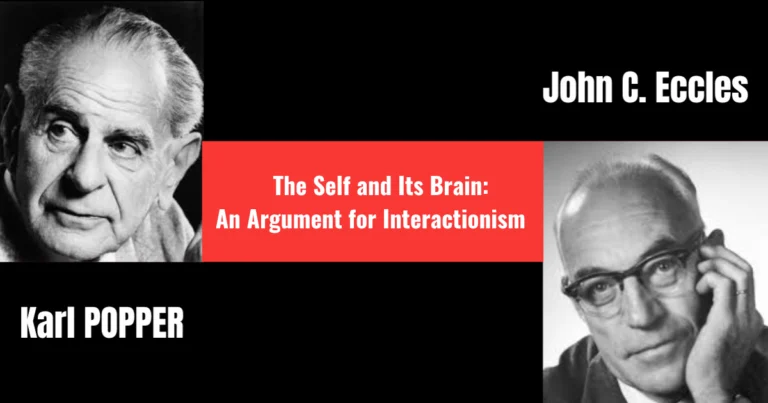Reading in the brain: The hidden mechanisms of literacy acquisition
Reading is one of the most fascinating feats of the human brain, a mysterious intersection of culture and biology that astonishes with both its apparent simplicity and the astonishing complexity it conceals. We move our eyes across black lines on a page or screen, and suddenly, an entire world unfolds, rich with thoughts, emotions, and ideas. But what truly happens in our brains when we read? This profound question lies at the heart of Reading in the Brain: The New Science of How We Read, the brilliant work of cognitive neuroscientist Stanislas Dehaene. Blending neuroscience, cognitive psychology, and pedagogy, this book offers a captivating journey into the secret workings of our reading brain.
From the opening pages, Dehaene draws us in with his exploration of the invisible mechanics behind reading. Did you know that our eyes don’t move smoothly across a line of text, but instead jump forward in rapid, jerky movements called saccades, pausing briefly to allow the fovea, a tiny area at the center of the retina, to capture the fine details of the words? While your eyes perform this delicate dance, your brain is hard at work: decoding letters, assembling them into words, and linking those words to sounds and meanings. What feels like an instantaneous process is actually driven by incredibly sophisticated neural circuits.
With clarity and a deep pedagogical instinct, the author introduces two key reading pathways: the phonological route, essential for converting letters into sounds, and the lexical route, which enables us to instantly recognize familiar words. Far from operating in isolation, these pathways work in close concert to ensure smooth, fluent reading. Reading in the Brain is nothing short of a revelation, demonstrating that something as seemingly mundane as reading a single word is, in fact, a neural masterpiece of efficiency. This book not only deepens our understanding of how reading works it reshapes how we think about the brain itself.
From shapes to words: The brain’s remarkable rewiring for reading
The book opens with a fundamental question: How does the human brain, which did not evolve for reading, develop this skill so fluently and automatically? Dehaene introduces the neuronal recycling hypothesis, the idea that the brain repurposes preexisting neural circuits to support new cognitive abilities such as reading. He explains that literacy is made possible by the repurposing of brain regions originally designed for object and shape recognition. Drawing on breakthroughs in neuroimaging (such as MRI, which allows real-time observation of brain activity) and research on dyslexia, the author demonstrates how specific areas, particularly the left occipito-temporal region, become specialized in word recognition. This rigorous analysis sheds light on why certain teaching methods are more effective than others and how neuroscience can enhance our understanding and treatment of dyslexia.
One of the book’s key concepts is what Dehaene calls the brain’s “letterbox”, a specialized region of the visual cortex that identifies written characters. He explains how this area, initially devoted to recognizing objects and faces, undergoes a transformation to process written text. This adaptation is made possible by brain plasticity, the ability of neural networks to restructure themselves in response to learning and experience. According to the neuronal recycling hypothesis, writing systems evolved to fit the constraints of the human brain, rather than the brain adapting to accommodate writing, a perspective that explains why some scripts are more easily processed than others.
Dehaene also highlights the dual-route model of reading, which consists of two complementary pathways: The phonological route, which deciphers words by converting letters into sounds, enabling a syllable-by-syllable reading strategy.The lexical route, which allows for the rapid recognition of familiar words without the need for phonetic decomposition.
Understanding this distinction is crucial for evaluating the effectiveness of various reading instruction methods. According to Dehaene, a well-structured learning process should balance both pathways, starting with phonological decoding to establish letter-sound associations, followed by the gradual development of lexical recognition for automatic reading. He argues that disruptions in this balance can lead to learning difficulties, particularly in dyslexic children who struggle to activate one or both pathways effectively.
This perspective leads Dehaene to criticize whole-word reading methods, which neglect phonology in favor of approaches that align more closely with the brain’s natural learning mechanisms. He supports his argument with extensive experimental research, demonstrating how reading fluency emerges as neural circuits become more specialized, reducing the cognitive effort required for word recognition. His analysis also reveals that reading difficulties such as dyslexia and alexia stem from specific neurological impairments, emphasizing the importance of evidence-based educational strategies.
Another key section of the book delves into reading disorders, particularly dyslexia. Dehaene explores its neurobiological foundations, showing how anomalies in the left temporal cortex disrupt phonological processing. He advocates for a science-based approach to education, where insights from neuroimaging and cognitive psychology inform teaching strategies tailored to struggling readers. He discusses recent research on brain plasticity, demonstrating how targeted training programs can help dyslexic individuals develop compensatory strategies.
One of the book’s greatest strengths is its integration of biology and culture, challenging the rigid dichotomy between innate abilities and learned skills. Instead of opposing nature and nurture, Dehaene argues that reading is an emergent phenomenon, arising from an intricate interplay between preexisting neural structures and cultural evolution. He illustrates how different writing systems around the world have evolved in response to the constraints of the human visual system, offering a fascinating perspective on the history of writing and its biological underpinnings.
Scientific insights into reading instruction: Educational implications and limitations
Dehaene also discusses the pedagogical implications of his research, emphasizing the importance of phonics-based instruction, which aligns with the brain’s natural processing mechanisms. He presents cross-linguistic studies on literacy acquisition, drawing from research in psycholinguistics and cognitive neuroscience. These studies demonstrate that transparent writing systems (such as Italian or Spanish, where letter-sound relationships are consistent) facilitate reading acquisition by reducing cognitive load. In contrast, opaque orthographies (such as English or French, with their irregular phonetic rules) require greater effort, prolonging the mastery of reading skills. Dehaene cites neuroimaging experiments showing that children learning in transparent writing systems exhibit more efficient neural activation patterns, enabling them to transition more quickly to the lexical route and develop reading fluency.
These findings underscore the need to consider linguistic characteristics when designing literacy instruction methods, optimizing teaching strategies for each language’s specific challenges.
However, despite the book’s depth, it is not without its limitations. While Dehaene provides compelling insights into reading instruction, he spends less time addressing the influence of educational contexts, such as classroom environments, teacher-student interactions, and socio-cultural factors. Additionally, some of his conclusions are drawn from studies with relatively small sample sizes, raising questions about the generalizability of his findings.
Decoding the reading brain: Why this book redefines literacy science
Compared to other works in cognitive neuroscience and psycholinguistics, Dehaene’s book stands out for its empirical rigor and systematic use of neuroimaging data. His perspective contrasts with constructivist theories of learning, which emphasize social interaction and pedagogical dynamics over biological constraints. Dehaene argues that while environment and interaction are important, they cannot fully explain how the brain specializes for reading. Instead, he contends that effective literacy instruction must be grounded in a deep understanding of the neural mechanisms underlying reading acquisition.
In this regard, his work aligns with Steven Pinker and Uta Frith, who emphasize the biological foundations of language and literacy. Pinker, for instance, argues that language is an innate faculty rooted in specific genetic and neural substrates, while Frith has significantly contributed to our understanding of reading development, outlining the progressive stages through which children become proficient readers. Dehaene builds on these ideas, demonstrating that literacy emerges from preexisting neural structures, with the visual recognition circuits gradually repurposed for processing written text. This perspective highlights the importance of neuroscience-informed educational strategies, emphasizing that literacy instruction should be adapted to the brain’s biological constraints rather than relying solely on social-constructivist models.
Ultimately, Reading in the Brain is an essential read for anyone interested in cognitive neuroscience and literacy acquisition. With exceptional clarity and rigor, Dehaene unpacks the neural mechanisms that underpin reading, while also offering valuable insights into the educational applications of these discoveries. Far from being just a popular science book, this work serves as a comprehensive scientific synthesis, both accessible and intellectually enriching.
However, for a broader perspective on literacy, readers may benefit from supplementing Dehaene’s work with research from education sciences and the sociology of language. A multidisciplinary approach, integrating neuroscience, pedagogy, and sociocultural perspectives, offers the most holistic understanding of the complexities of reading and its many dimensions.
References
Dehaene, S. (2009). Reading in the brain: The science and evolution of a cultural invention. New York, NY: Viking.
Frith, U. (1985). Beneath the surface of developmental dyslexia. In K. Patterson, J. Marshall, & M. Coltheart (Eds.), Surface dyslexia (pp. 301-330). Erlbaum.
Pinker, S. (1994). The language instinct: How the mind creates language. William Morrow.








